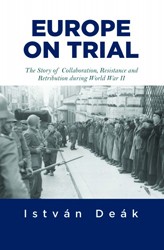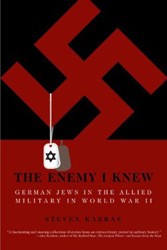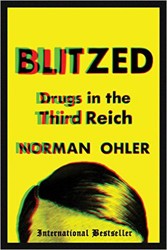As the war turned against Nazi Germany in late 1944, the SS and the German army, fearful of falling into the hands of the Red army, made the decision to move prisoners in concentration camps on “death marches” to camps within the interior of Germany. At the beginning of 1945, the concentration camp population numbered around 700,000, of which an estimated 200,000−250,000 were Jews. Around February 1945, Hitler issued a verbal order to blow up the concentration camps on the approach of the Allies. According to Felix Kersten, Himmler’s masseur, he was told by the head of the SS that “if National Socialist Germany is going to be destroyed, then her enemies and the criminals in concentration camps shall not have the satisfaction of emerging from our ruin as triumphant conquerors. They shall share in the downfall. Those are the Fuhrer’s orders…” Chief among Nazi Germany’s enemies were the Jews. Although the book under review deals with the last days of the Third Reich, it also provides valuable insights as to why, at the moment of defeat, Hitler was determined to murder every last Jew in Nazi-occupied Europe.
Ian Kershaw is among the leading historians of Nazi Germany, and his two volume biography of Adolf Hitler is the preeminent work on his subject. The End reveals much as to why Nazi Germany fought on despite its imminent destruction. A country at war, states Kershaw, attempts to seek terms to end the conflict when its defeat is apparent. Self-destruction by continuing to fight on to the last, to almost total devastation, is extremely rare. Thus, the focus of Kershaw’s book is to ask Why? Why were Hitler’s self-destructive orders obeyed? How far were Germans prepared to support Hitler to the end, even though they knew he was driving the country to destruction? Were they in fact still giving him their willing backing or were they in fact terrorized into doing so? These are some of the many questions which Kershaw attempts to answer in this indispensable history. As for the murder of European Jewry, he notes that the evacuations and subsequent death marches from Auschwitz, Gros-Rosen, Stutthof and other camps in the east, had, from the regime’s perspective an underlying rationale:
The prisoners were to be kept out of the hands of the enemy, and brought to the interior of the Reich where… though emaciated, exhausted, frozen, starved…they could be available for labor.
Or, as Himmler saw it, the Jewish prisoners were potential pawns in any deal with the Allies. It is obvious from reading The End that Nazi Germany continued to believe until the end in a Jewish cabal that was behind the Allied governments, and Hitler was determined that the destruction of his country was less important than destroying the Jewish enemy.




